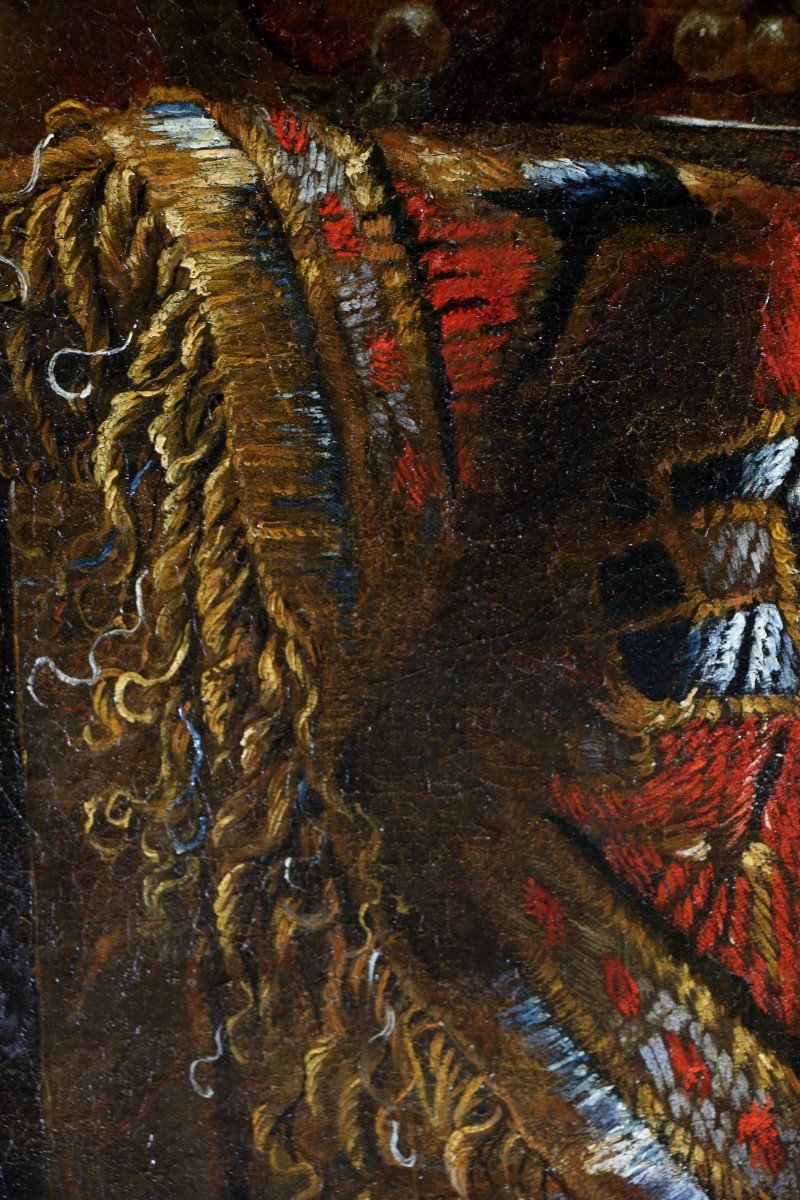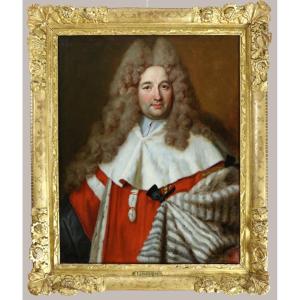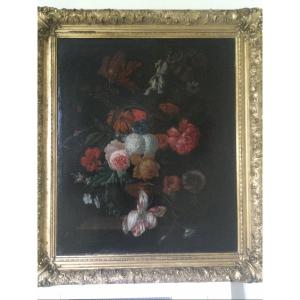Re-canvas of 88 cm by 71 cm.
Sumptuous setting, Italy from the 17th century, re-gilded in the 19th century, 115 cm by 98 cm.
The artist offers us an entablature covered with a magnificent carpet on which are placed a sumptuous needle, a baluster vase, fruits, as well as mushrooms and flowers. In the background a heavy curtain with its trimmings accessories. An important, very ornate 17th century frame magnifies the whole.
Francesco Maltese (1611; 1660)
Despite his importance in the development of the still life genre in 17th-century Rome, the artist's true identity has become lost and confused over the years. Until recently, Francesco Noletti was known as Francesco Maltese due to his place of origin and it is by this name that he has been remembered in sources since the late 17th century (see K . Sciberras and G. and U. Bocchi (ed.)), Francesco Noletti detto Il Maltese (Valletta? 1611 -Roma 1654), in: G. and U. Bocchi (ed.), Pittori di Natura morta a Roma. Artisti Italiani 1630-1750, Viadana 2005, p. 357-397). Francesco Noletti is also known more recently as Francesco Fieravino. Only recently has it become possible to rediscover his true identity through the rediscovery of an anonymous portrait by Francesco Noletti at the Foundation for International Studies in Valletta. The corpus of this painter still partly remains to be reconstructed, but the extraordinary quality of the still lifes attributed to him justifies the success he obtained in Rome; in fact, he collaborated with Andrea Sacchi and also received international commissions. His works were highly regarded and a still life with a carpet was part of the famous collection of Archduke Leopold William of Austria, governor of the Spanish Netherlands. In his work, we find the naturalist aim typical of the genre in the first post-Caravaggio works: in particular the meticulous rendering of objects, fruit baskets, fringes of carpets with heavy folds, accentuated by strong contrasts of chiaroscuro. To this careful analysis of reality, the artist adds a strong illusionist vein, with an almost tactile imitation of carpets achieved by a skilful rendering of the material which seems to emerge from the painted surface. The still life genre flourished in Rome following the death of Caravaggio, initially focusing on the depiction of flowers, fruits and vegetables, then expanding the range of subjects to include musical instruments, weapons, games and other items. The genre was so extraordinary successful that it pushed many artists to specialize in this type of painting and Francesco Noletti seems to have been one of the driving forces in Rome of an iconography dominated by carpets, textiles and instruments of painting. music. His work had an influence even outside the city, as evidenced by the works of the Neapolitan Giuseppe Recco and the Frenchman Meiffren Conte. (Source: Dorothéum)




























 Le Magazine de PROANTIC
Le Magazine de PROANTIC TRÉSORS Magazine
TRÉSORS Magazine Rivista Artiquariato
Rivista Artiquariato
